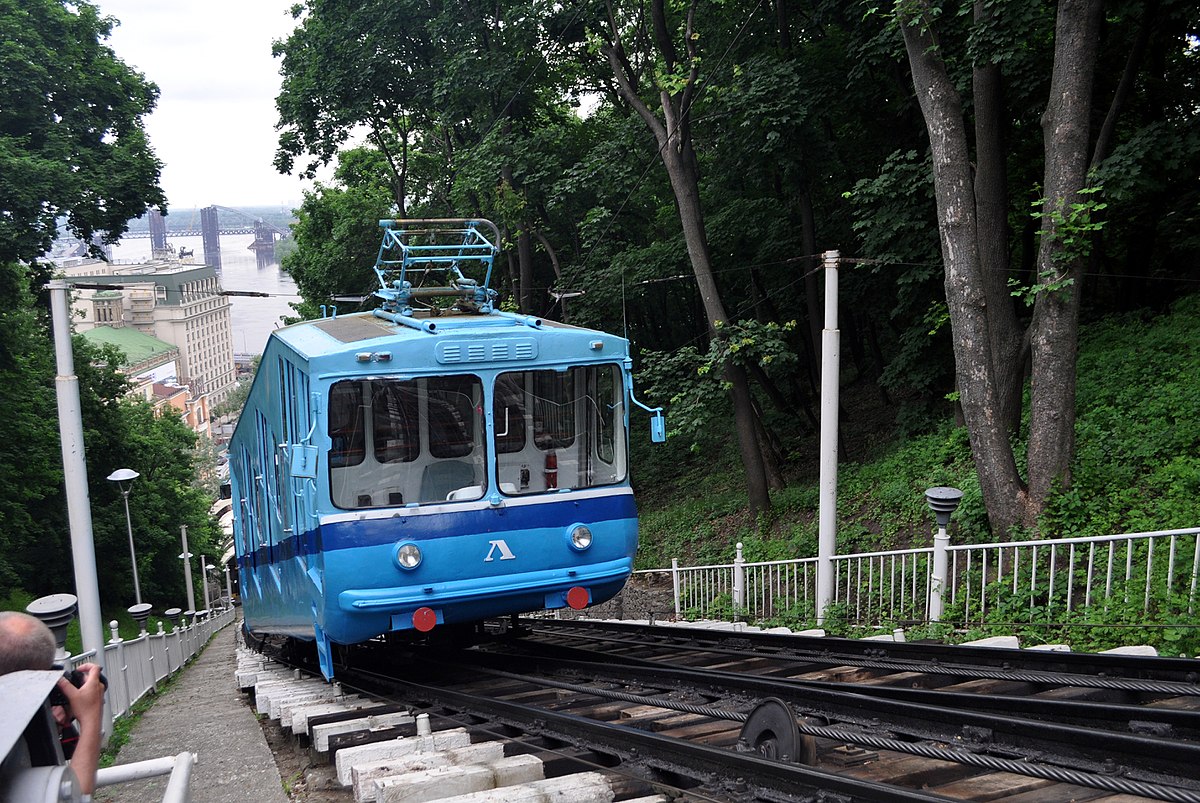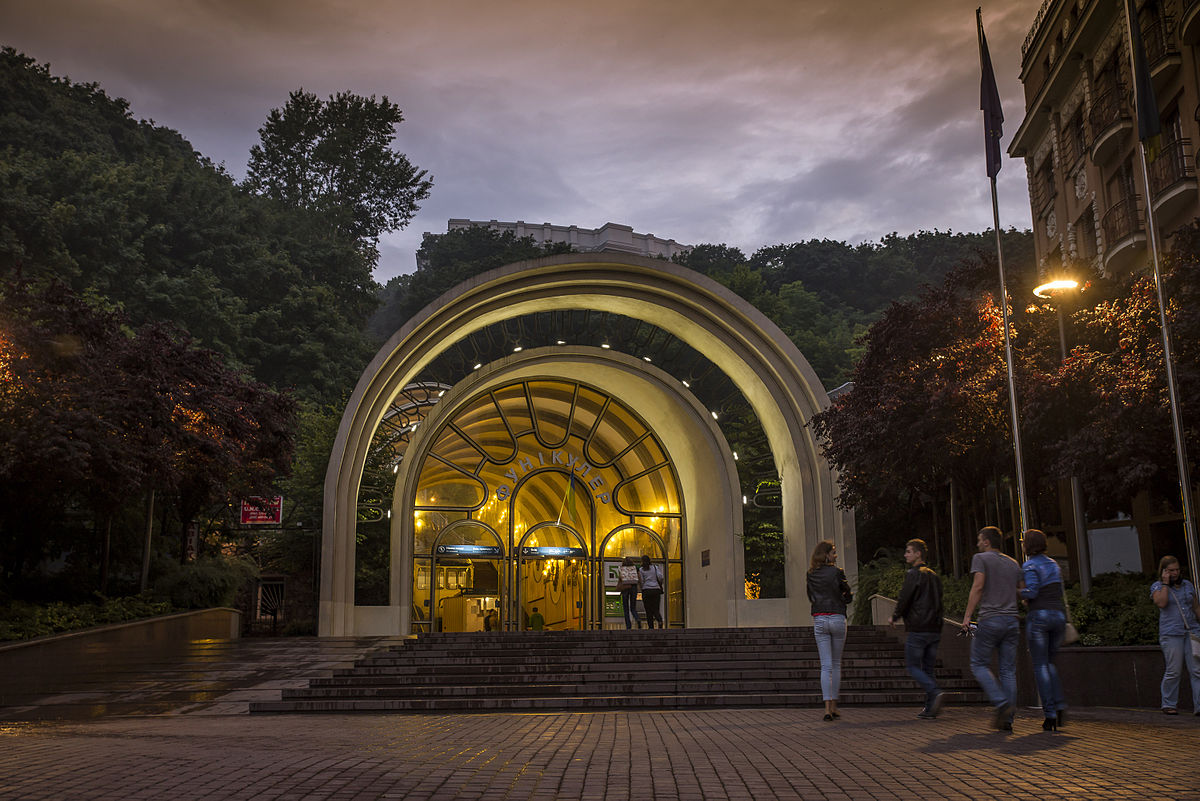The Kiev funicular allows you to quickly and inexpensively get from Podol to the Upper Town. It is one of the first funiculars in the former Russian Empire, opened in 1905 after the Kremlin and Pokhvalinsky elevators in Nizhny Novgorod (1896) and the Odessa funicular (1902).
Mikhailovsky mechanical lift
Until the beginning of the 20th century, people traveled from Podol to the Upper Town using wooden stairs built into the slopes. With the development of urban transport, automated methods of climbing Vladimirskaya Gorka began to be discussed. Due to its narrowness, curvature and steepness, the tram could not travel along Andreevsky Descent and therefore it was decided to build a lift in another place. Construction of an electric cable railway” (Mikhailovsky mechanical lift, named because of the nearby Mikhailovsky Golden-Domed Monastery), which would connect Mikhailovskaya Gora with the Borichev current, was carried out from 1903 and ended in the spring of 1905.
The funicular equipment and cars were made in Switzerland, which had extensive experience in creating cable cars. Two DC motors with a voltage of 500 Volts and a power of 65 horsepower each ensured reliable operation. One of the engines was a spare. A special band brake was connected directly to the engine, activated either automatically or by a mechanic. This brake did not allow the speed to be higher than the operating speed and prevented the cars from hitting the buffers of the upper or lower station. Both carriages had a capacity of 70 passengers and moved up and down at a speed of 2 meters per second.
Cable car
The route of the Mikhailovsky mechanical lift was 40 meters shorter than the current one. It only reached Borichev Tok Street, from where the tram of the private Belgian joint-stock company, which monopolized the tram and horsecar in many cities of the Russian Empire, went to Kontraktovaya Square. In the summer of 1928, there was an accident on the funicular. During repairs while changing the rope, the upper car fell down and collided with the lower one. No people were injured, but the carriages were completely destroyed. In 1929, the funicular line was extended by 40 meters, to Poshtovaya Square and Sagaidachny Street.
Such a distance was included in the original project, but then the owner of one of the estates located on Borichev Current on the funicular route opposed the implementation of the plan. The price she demanded as compensation for the demolition of the estate and the construction of a new one was prohibitive for the city, and the state reliably protected private property with laws. Only with the establishment of Soviet power did the original idea come to life. When extending the funicular, a new entrance was built in one of the houses on the square, since the previous one was equipped as a corridor for passengers to exit. The idea of building new cable car lines was also in the air. According to the plans of the second five-year plan, lifts were supposed to appear on Voznesensky Spusk, on Andreevskaya Hill and at the Eugenia Bosch Bridge (located next to the metro bridge, destroyed during the hostilities of 1941).
In winter, if there is a sufficient amount of snow, the funicular is used by snowboarders as a lift for skiing along the territory of Vladimirskaya Gorka between the upper and lower stations of the funicular.
Where is the Kiev funicular located?
Vladimirsky Spusk, 3 (lower station); Trekhsvyatitelskaya street, 8-A (upper station)
08:00 – 22:00







